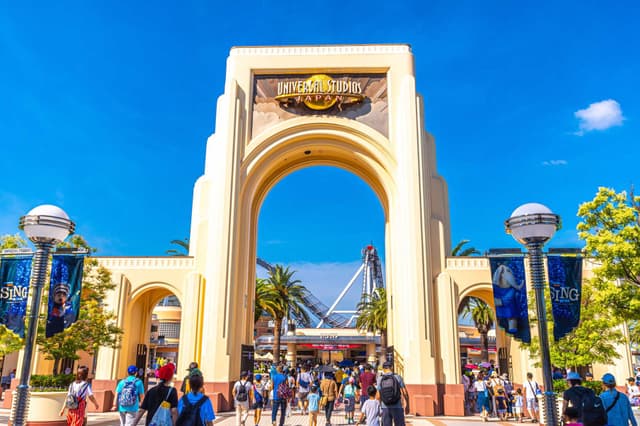
Kyoto's Geisha District Bans Tourists to Protect Cultural Heritage
James Saunders-Wyndham

James Saunders-Wyndham
Table of contents:
Local officials in Kyoto city, Japan, banned tourists from entering the narrow backstreets of the famous Gion district from April 2024. These steps have been taken to protect the local geisha, known locally as geiko, and maiko (trainee geisha).
This measure is aimed at preserving traditional social norms. However, Gion's main Hanamikoji Street, a public street, are still be open to tourists.
➡️ How long should you stay in Kyoto? Our guide can help decide how many days in Kyoto 🇯🇵
The issue of overtourism has been a growing problem that has impacted Japanese locals. This has been easy to see in the Gion district, where sightseers thronged the charming alleyways. As this is one of the busier tourist areas of Kyoto, it is disrupting the daily lives of the local inhabitants and the professional entertainers.
Some tourists, often unfamiliar with local etiquette, have been accused of harassment and even physical assault, reported to touching the geisha kimonos, obstruct their paths, and demanding photographs.

To address Kyoto's overcrowding issues posed by overtourism, the local council of Gion has made the decision to implement tourism restrictions, starting April 2024. This measure involves the implementation of cordons in the narrow alleyways of the district.
The purpose of these cordons is to restrict access to these areas exclusively for Geisha, their clients, and the residents of the district. By doing so, the council aims to alleviate the negative impacts of overtourism in Gion, often involving foreign visitors to Japan.
Kyoto is famous for its Geisha, who are often seen as symbols of traditional Japanese culture. Geisha are known for their distinctive white makeup and elegant kimonos. However, they have faced increasing harassment from tourists who ignore rules and photography bans.
Despite clear guidelines, some tourists harass Geisha. Some tourists follow them down private streets, taking pictures without permission. And sometimes tourists even physically bothering geiko. This behavior has become a significant issue in the old Kyoto Geisha district.

The decision to ban tourists from the alleys of the Gion district is seen as a crucial step towards preserving the cultural respect and heritage of Kyoto local traditions.
Although it might seem like a drastic measure, it is hoped that this move would provide greater privacy to the geisha and maikos, and help in the preservation of the traditional Japanese art form.
As the world moves towards a style of travel more conscious of cultural awareness, it is essential to respect local customs, traditions, and people. The move by Kyoto's officials is a step towards greater sustainable development of future tourism.







The geisha district is a magnet for tourists visiting Kyoto. Surrounded by historical landmarks, the district is the heart of Kyoto's geisha culture. However, the pursuit by tourists to capture the perfect snapshot of the geisha and maiko to add to their social media accounts has led to a list of problems, including unsolicited photography and physical harassment.
The decision to restrict tourist entry in Gion is not merely about safeguarding the Geisha, but it is also about preservation efforts to protect a vital aspect of Japanese traditional arts and culture.
By sealing off the traditionally and culturally rich area of Kyoto, the local council and city government aim to protect the Japanese art form and its custodian artists.

The geisha community was already grappling with the implications of the Covid-19 pandemic, which brought their engagements down by 95 percent. The lockdown and social distancing norms added to their struggles. The ban on tourists in Gion comes as a crucial step in providing them some relief amidst these challenging times.
Experts on geisha culture, like Peter Macintosh, have expressed their support for the ban. They believe that the situation in Gion, the geisha district, had spiraled "completely out of control" and needed immediate intervention. They hope that the ban will serve as a corrective measure and restore some semblance of order in the district.
While tourism is a significant contributor to the local economy, it is crucial to balance its benefits with its potential harm on the local culture and community. As we move forward, it is essential to keep this balance in mind and strive towards a more sustainable and respectful form of tourism.
Kyoto’s Geisha district, Gion, banned tourists because overtourism was harming its cultural heritage. Too many visitors disrupted daily life and made it hard for geisha and maiko to move freely. The ban helps preserve the traditional atmosphere and protect the local community.
Tourists can still visit parts of Gion, but certain streets are now off-limits to protect residents. Visitors must follow clear guidelines, stay respectful, and avoid disturbing geisha. This ensures that tourism remains sustainable and doesn't harm local culture.
Overtourism made it difficult for geisha and maiko to perform their duties comfortably. Crowds would gather to take photos without permission, causing stress and privacy concerns. This impacted their daily routines and threatened traditional customs.
Kyoto has placed restrictions on tourist access to specific streets in Gion. Authorities have increased signs, enforced rules, and educated visitors about proper behavior. These measures aim to balance tourism with the need to preserve local traditions.
Visitors can protect Kyoto’s cultural heritage by respecting local guidelines and privacy. It's important to avoid taking pictures of geisha without consent and stay out of restricted areas. Being thoughtful and respectful helps ensure Gion remains beautiful and traditional for future generations.
Loading Comments...

I've been immersed in Japanese culture and daily life for over 30 years and am proud to call Japan my home. Originally from Australia, my journey has taken me from teaching at Japanese universities to traveling extensively across the country, uncovering its hidden gems. As a web developer, I built Romancing Japan from the ground up to share these experiences with you. Whether it's the charm of old Kyoto, the pulse of Tokyo, or the tranquility of the countryside, I love helping others discover the magic of Japan—one story at a time.





